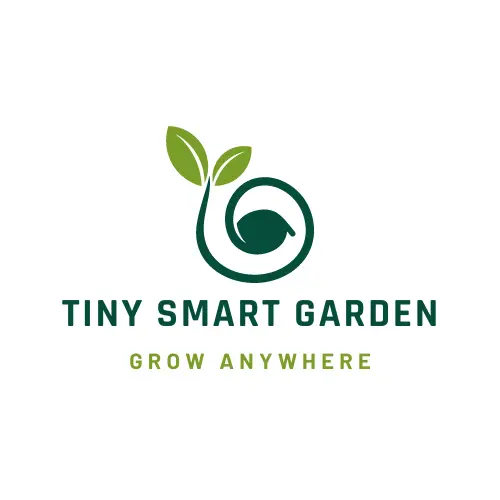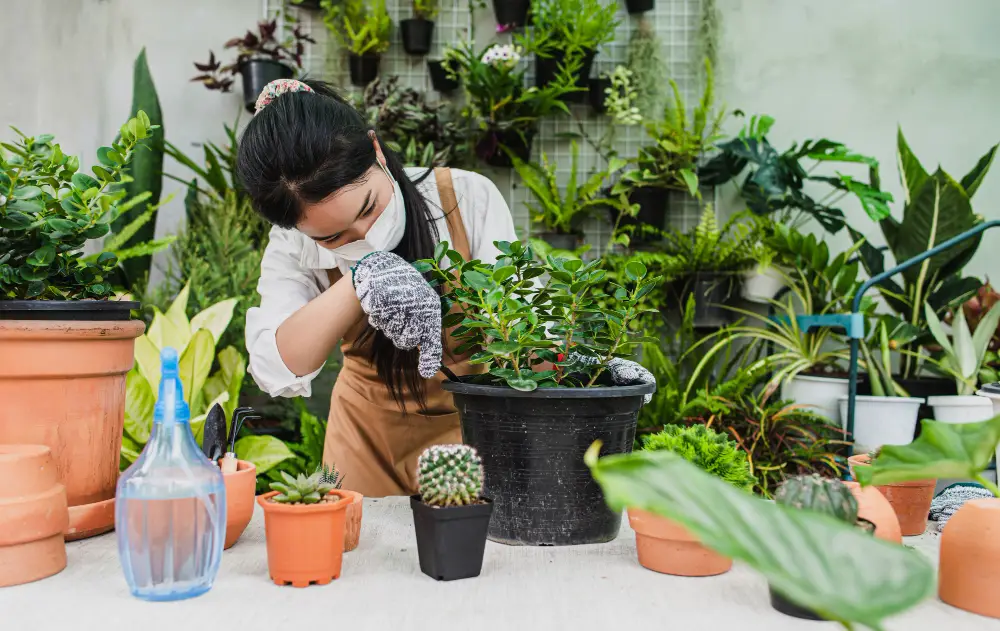Image by jcomp on Freepik
Looking to add some greenery to your home or outdoor space, but your square footage is limited. Look no further than building a vertical container garden!
Not only does a vertical garden allow you to make the most of your space, but it can also add an aesthetically pleasing element to your décor. Creating a vertical garden using containers is one of the easiest ways to go vertical.
We’ll provide you with tips and tricks for building your vertical container garden, no matter your level of experience. Here’s a step-by-step guide to help you get started.
Table of Contents
Planning Your Vertical Container Garden
Before diving into building your garden, you need to do a bit of planning ahead. This will save you a lot of time in the long run. Here are things to consider in the planning phase.
Find the best location
Before starting your vertical garden, determine the location where it will be built. Firstly consider the weight-bearing capacity of the wall you plan to use. Choose an area that gets plenty of sunlight and is easily accessible for watering and maintenance. Most plants require at least six hours of direct sunlight each day.
Create a design for your vertical garden
A design is an essential step in the planning process. A well-designed vertical garden can transform an ordinary wall into a beautiful, living work of art. Consider factors such as color, texture, and plant arrangement to create a design that is both functional and attractive.
Take into consideration the plant’s needs and the available space. It’s important to note that vertical gardens have less soil than traditional gardens, so you need to be careful not to overcrowd your plants.
Make sure to give each plant enough space to grow and thrive. You can combine plants with smaller roots in one container and various container sizes depending on the plants you choose.
Select the right materials for your vertical garden
You can use a variety of materials to create your garden, including wooden pallets, PVC pipes, or a repurposed ladder. For planters, you can go with regular plastic pots, ceramic pots, or even old cooking pots, repurposed teapots, and little buckets for a more rustic look.
The materials you choose for your vertical garden will affect its durability and longevity. Consider using lightweight materials that are easy to install and maintain. Take into account the weight, their resistance to moisture, and their ability to hold soil.
Build Your Vertical Garden
Once you have everything planned out start building, here is how to do it, fast and easy.
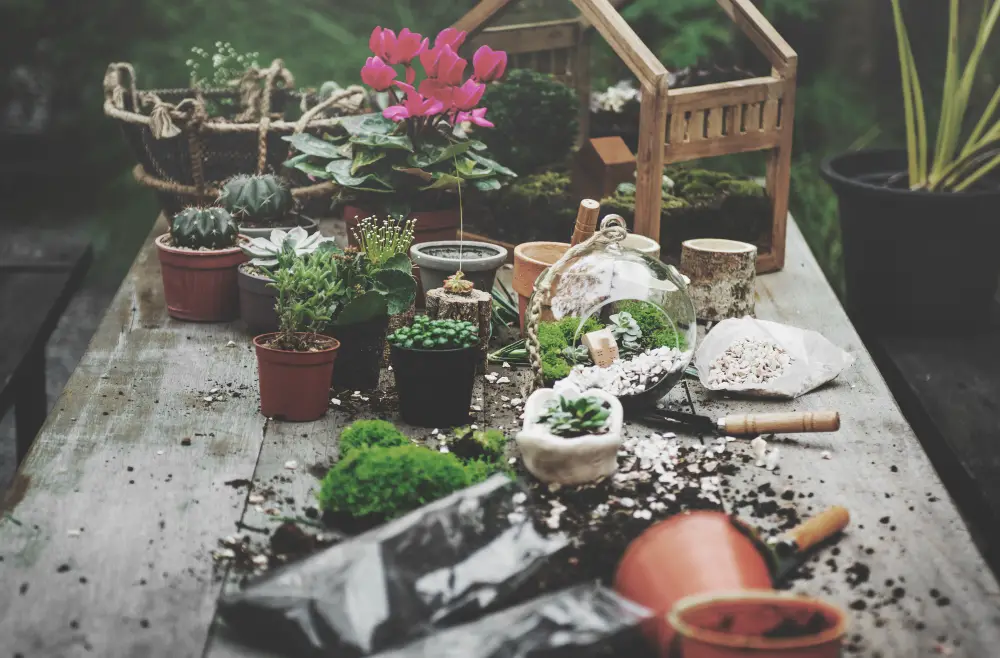
Image by rawpixel.com on Freepik
Prepare the space and tools for building
Before building your vertical garden, make sure you have all the necessary tools and equipment. Tools like a drill, screws, and measuring tape are necessary to construct the garden frame.
Construct the frame of the vertical garden
The frame is the backbone of any vertical garden, and it needs to be sturdy enough to hold the plants and the planters when fully watered. Construct a frame using the appropriate materials, such as metal or wood, and attach it securely to the wall. Be sure to follow your design closely, taking care to measure and cut each piece precisely.
Add soil and plant your plants
Once the frame is in place, add soil to the containers you chose, and be sure that they have drainage for the excess water. Choose a high-quality potting mix that is well-draining and contains plenty of organic matter. Avoid using heavy, clay soils, as they can become waterlogged and damage your plants. You can create well-draining soil by mixing in materials like sand, perlite, or vermiculite.
Don’t just randomly start putting plants into pots and hanging them about. Consider all the factors mentioned above, and choose the plants accordingly.
Best plants for a vertical garden
The right plant selection is essential for a successful vertical garden. Choose plants that are easy to grow and suitable for your climate. Some popular plants for vertical gardens include herbs, succulents, ferns, and even vegetables.
- Leafy Greens
- Lettuce is easy to grow and requires only four to six hours of sunlight per day. It grows best in loose soil that is well-draining.
- Spinach is another leafy green that is easy to grow and can tolerate partial shade. It requires a lot of moisture, so make sure to water it regularly.
- Arugula has a peppery taste and can be grown in partial shade or full sun. It requires well-draining soil and moderate watering.
- Herbs
- Basil is a popular herb that requires six to eight hours of sunlight per day. It grows best in well-draining soil and requires regular watering.
- Thyme is a hardy herb that can tolerate partial shade. It requires well-draining soil and moderate watering.
- Mint is a fast-growing herb that can be grown in partial shade or full sun. It requires a lot of moisture, so make sure to water it regularly.
- Vegetables
- Tomatoes require at least 6-8 hours of sunlight per day and well-draining soil. They also need to be watered regularly, with about 1-2 inches of water per week.
- Peppers prefer full sunlight and well-draining soil. They need to be watered regularly, but not too much, as they don’t like wet soil.
- Cucumbers require at least 6-8 hours of sunlight per day and well-draining soil. They need to be watered frequently, with about 1-2 inches of water per week.
- Beans need full sunlight and well-draining soil. They also need to be watered regularly, with about 1 inch of water per week.
- Kale can tolerate partial shade and requires about 4-6 hours of sunlight per day. It prefers well-draining soil and needs to be watered regularly, with about 1 inch of water per week.
- Flowers
- Petunias are a popular choice for vertical gardens because they are easy to grow and come in many colors. They require six to eight hours of sunlight per day and well-draining soil.
- Nasturtiums have beautiful, edible flowers that are great for adding color to your meals. They require six to eight hours of sunlight per day and moderate watering.
- Pansies are another popular choice for vertical gardens because they are easy to grow and come in many colors. They require four to six hours of sunlight per day and well-draining soil.
Make sure your plants like each other and grow well together, or even help combat pests, consider companion planting.
Companion planting, plants that work together
This is a great way to maximize your vertical garden’s potential and create a thriving ecosystem. Here are some of the best vegetables, herbs, and flowers to plant side by side in your vertical garden:
- Tomatoes and basil – Tomatoes and basil are classic companions that are often grown together in traditional gardens. Basil can help to repel pests like whiteflies and mosquitoes, while also enhancing the flavor of tomatoes.
- Cucumbers and nasturtiums – Nasturtiums are a great companion plant for cucumbers, as they can repel cucumber beetles and other pests. They also add a splash of color to your garden and are edible too!
- Peppers and marigolds – Marigolds are often used as a natural pest repellent in gardens, and they can help to keep pests away from pepper plants as well. They also add a bright pop of color to your garden.
- Beans and chives – Chives can help to repel pests like aphids and Japanese beetles, while also adding a savory flavor to your beans. They’re also a great source of nutrients for your garden soil.
- Lettuce and calendula – Calendula, also known as pot marigold, is a great companion plant for lettuce as it can repel pests like aphids and whiteflies. It also adds a beautiful golden color to your garden.
- Radishes and spinach – Spinach can help to provide shade for radishes, which prefer cooler soil temperatures. Radishes, in turn, can help to loosen up the soil and make it easier for spinach to grow.
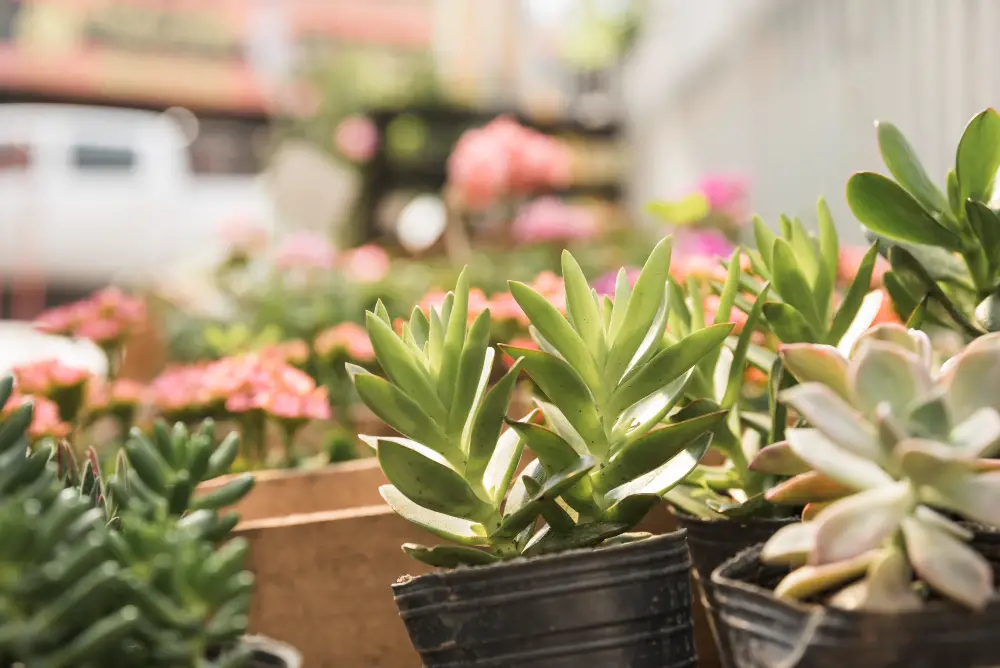
Image by Freepik
How to Maintain Your Vertical Garden
Now that you have everything down, and all the plants are happy in their pots, you need to give your garden the much-needed attention to thrive and grow.
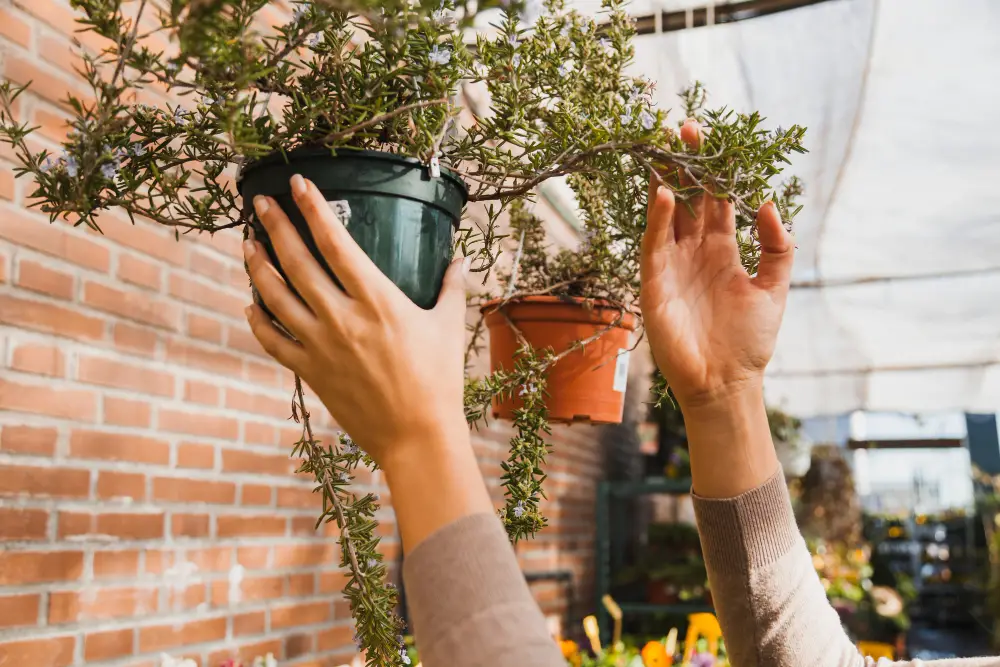
Image by Freepik
Understand the needs of your plants
Vertical gardens require proper maintenance to ensure that the plants grow healthily and look aesthetically pleasing. Different plants have different needs when it comes to sunlight, water, and nutrients. Before planting, research the specific plants you want to include in and ensure that they are compatible with each other.
Water properly
Watering a vertical garden can be tricky. The best way to water a vertical garden is by using a garden hose. Make sure that every container is evenly watered. Monitor the moisture in each container and make sure to take into account the size of your plants. As they grow, they will need more water. If you have various sizes of containers, keep in mind that the smaller ones will dry out faster.
Fertilize naturally
Like all plants, those in a vertical garden require nutrients to grow healthy and strong. Using natural fertilizers is a great way to provide your vertical garden with the nutrients it needs. Here are some of the best natural fertilizers:
- Compost – Compost is a great natural fertilizer that you can make at home using food scraps, yard waste, and other organic materials. It’s rich in nutrients like nitrogen, phosphorus, and potassium, which are essential for plant growth.
- Worm castings – Worm castings, also known as vermicompost, are another great natural fertilizer that’s easy to make at home. They’re rich in beneficial microorganisms that can help to improve soil health and plant growth.
- Fish emulsion – Fish emulsion is a natural fertilizer made from fish byproducts like bones, scales, and skin. It’s high in nitrogen and other nutrients, making it a great choice for promoting plant growth.
- Seaweed – Seaweed is a great natural fertilizer that’s rich in trace minerals like iron, zinc, and magnesium. It can also help to improve soil structure and promote healthy root growth.
- Coffee grounds – Coffee grounds are a great natural fertilizer that’s rich in nitrogen, phosphorus, and potassium. They also contain beneficial compounds like caffeine and antioxidants, which can help to promote plant growth and protect against pests and diseases.
- Eggshells – Eggshells are a great source of calcium, which is essential for healthy plant growth. Crushed eggshells can be added directly to the soil or compost pile to provide your plants with this important nutrient.
- Bone meal – Bone meal is a natural fertilizer made from ground-up animal bones. It’s high in phosphorus, which is essential for promoting healthy root growth and flower development.
Remember to use fertilizers in moderation, as over-fertilizing can lead to nutrient burn and other problems.
Use Natural pest control
These methods are a great way to keep your garden healthy and pest-free without the use of harmful chemicals. Here are some effective natural pest control methods you can use:
- Companion planting – Companion planting involves growing certain plants together to repel pests and attract beneficial insects. For example, planting marigolds or nasturtiums can help to repel aphids and other pests, while attracting bees and other beneficial insects.
- Handpicking – This method involves physically removing pests from your plants by hand. It’s a simple but effective way to control pests like caterpillars, snails, and slugs.
- Neem oil – Neem oil is a natural insecticide that is effective against a wide range of pests, including aphids, mites, and whiteflies. It’s also safe for beneficial insects like bees and ladybugs.
- Soap spray – A simple soap spray made with dish soap and water can help to control pests like aphids, spider mites, and whiteflies. Just mix 1-2 tablespoons of dish soap in a gallon of water, and spray the mixture on your plants.
- Diatomaceous earth – Diatomaceous earth is a natural powder made from the fossilized remains of diatoms. It’s effective against pests like ants, fleas, and bed bugs, and can also help to control slugs and snails.
- Garlic spray – Garlic spray is a natural insecticide that is effective against a wide range of pests, including aphids, spider mites, and whiteflies. To make the spray, crush a few cloves of garlic and steep them in hot water for several hours. Then strain the mixture and spray it on your plants.
By using natural pest control methods, you can keep your garden healthy and thriving without relying on harmful chemicals. Just remember to monitor your plants regularly and take action at the first sign of pest problems.
Prune and Trim Your Plants
Plants in a vertical garden tend to grow faster and taller than those in a traditional garden, making it important to prune and trim them regularly. This will help to prevent overcrowding and ensure that the plants grow evenly. Be sure to use sharp and clean tools when pruning and trimming to avoid damaging the plants. Take care to remove dead or damaged foliage and trim back any overgrowth to keep your vertical garden looking neat and tidy.
Benefits of a vertical container garden
A vertical garden has many benefits that make it a great choice for those who want to enjoy the beauty of plants but have limited space. Some of the benefits include:
- Increases the available growing space
- Improves air quality and reduces noise pollution
- Adds an aesthetic appeal to the space
- Reduces energy consumption by cooling the area
Saving space and utilizing small areas
Vertical container gardens are perfect for small spaces, as they take up minimal floor space while offering maximum growing space. They are great for apartments, balconies, and even rooftops, that may not be suitable for traditional gardens.
In addition to their practical benefits, they can be visually appealing. A well-designed vertical garden can add a touch of greenery to any space, making it a more pleasant and inviting environment.
Vertical gardens offer endless opportunities for creativity, allowing you to experiment with different plant combinations and arrangements.
Read more about the best plants to grow on your terrace.
Common Problems and How to Solve Them
Despite your best efforts, you may encounter some common problems with your vertical garden.
- One of the most common issues is overwatering or underwatering. To avoid this, make sure you’re watering your plants properly and providing enough drainage to prevent water from pooling at the bottom of your containers. Overwatering or underwatering your plants can cause them to die or become diseased.
- Soil erosion can also be a problem in a vertical garden, particularly if you’re using loose or sandy soil. To prevent this, consider using a soil amendment or mulch to help hold the soil in place. Make sure to use a high-quality soil mix that is specifically designed for vertical gardens. Additionally, consider using a soil stabilizer or mesh to hold the soil in place.
- Pest infestations are another common issue with vertical gardens. To prevent pests from damaging your plants, choose pest-resistant plants, try companion planting, and take care to monitor your garden regularly for signs of infestation. Pests such as aphids, mites, and whiteflies can damage your plants in a vertical garden. Try using natural pest control methods.
- Limited sunlight can be a challenge in a vertical garden, particularly if you’re growing plants indoors. Consider adding artificial lighting to supplement natural light and help your plants thrive. Plant shade-tolerant plants that require only partial sunlight. Additionally, you can install reflective surfaces to help reflect sunlight onto your plants.
Tips for a Successful Vertical Garden
To ensure the success of your vertical garden, consider the following tips:
Start small and gradually add more plants
- When first starting, it’s important to start small and not overwhelm yourself. Begin by planting just a few plants and then gradually add more as you gain experience and confidence.
- Regular maintenance and upkeep are key. Vertical gardens require regular maintenance to ensure their success. This includes regular watering, pruning, and fertilizing. It’s important to set a schedule for maintenance and stick to it.
- Choose plants that will thrive in a vertical garden environment. Not all plants are suited for a vertical garden. Choose plants that have shallow root systems and can tolerate less soil volume. Some good options include herbs, succulents, and small vegetables like cherry tomatoes.
FAQs:
- How much space do I need to build a vertical garden?
You can build a vertical garden in even the smallest of spaces, such as a balcony or a small patio. All you need is a wall or fence to attach the garden to.
- Can I use a vertical garden to grow vegetables?
Yes, a vertical garden is a great way to grow small vegetables like cherry tomatoes, lettuce, and herbs.
- Do I need any special equipment to build a vertical garden?
No, you don’t need any special equipment to build a vertical garden. All you need are basic gardening tools and the appropriate materials for constructing the frame.
- How often do I need to water my vertical garden?
The frequency of watering your vertical garden will depend on the plants you choose and the climate you live in. It’s important to monitor the soil moisture levels and adjust your watering schedule accordingly.
- Can I build a vertical garden indoors?
Yes, you can build a vertical garden indoors using a variety of different systems, such as a vertical hydroponic system or a hanging planter system. Just be sure to choose plants that are suited for indoor growing conditions.
